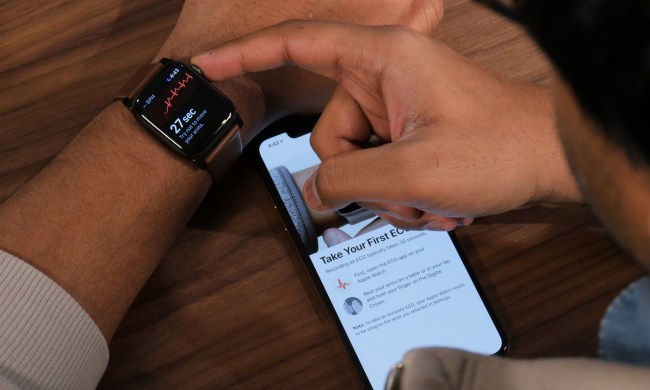Toyota unveiled a new robotic leg brace at its head office in Tokyo on April 12. It’s called the Welwalk WW-1000 and may help bring mobility back to partially paralyzed people.
“Our vision is about trying to deliver mobility for everybody,” Toshiyuki Isobe, Toyota’s chief officer for research, told the Associated Press. “We have been developing industrial robotics for auto manufacturing, and we are trying to figure out how we can use that technology to fill social needs and help people more.”
Worn one leg at a time, the Welwalk system consists of a single leg brace that connects to the thigh, knee, ankle, and foot. Sensors help monitor walking speed and gait in order to provide support, while medical staff use a touchscreen to control the device, which is intended to be used during treadmill therapy sessions.
Toyota will begin to rent out 100 Welwalks to medical centers around Japan for a one-time initial charge of $9,000 and a $3,200 recurring monthly fee.
Eiichi Saito, medical doctor and vice president at Fujita Health University, told AP the device is intended to assist patients but not give them too much support. “This helps just barely enough,” he said. Light support helps patients rehabilitate without making them dependent on the device.
Such assistive devices are intended to help patients gain back their mobility and help physicians monitor progress, according to Luke Hares, chief technology officer at Cambridge Medical Robotics in the United Kingdom. He told AP that devices like Welwalk allow therapists to be “so much more precise.”
This isn’t Toyota’s first human-centered robot. The car manufacturer previously demonstrated its Human Support Robot, which uses a robotic arm to grab objects for bedridden patients.
Other Japanese manufacturers are investing in medical robotics as well, including Panasonic, which last year unveiled a robust robotic exoskeleton. And car manufacturers like Hyundai have been showing off similar exoskeletons since May 2016. However, Toyota’s is specifically designed for rehabilitation.


